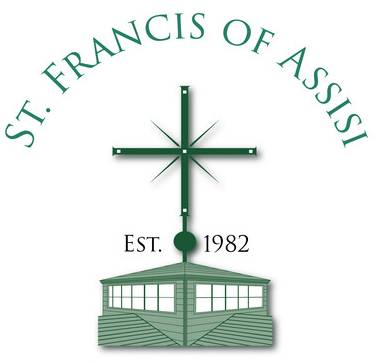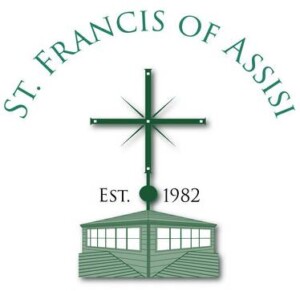“The Easter (or Paschal) Vigil is THE liturgy of the Church year and is the most important Eucharistic celebration of the year. Its roots reach back to the Apostolic generation. In the Church’s earliest centuries, it lasted all night until dawn. In fact, in the earliest Church, there were no separate liturgies during Easter Sunday; the Vigil held ‘privilege of place,’” so says the National Catholic Register.
Father Jim Sabak, O.F.M., our resident Franciscan Friar, has published a book on the importance of Vigils in the early Church, with “‘Vigilemus et Oremus’: The Theological Significance of ‘Keeping Vigil’ in Rome from the Fourth to the Eighth Centuries.” The book is a journey through hundreds of years, and over 600 pages, of the liturgical practice of keeping Vigil in early Roman tradition and its theological significance in the Church. We asked Father Jim to briefly offer his perspective on the importance of the Easter Vigil as we prepare for this year’s Holy Week.
“The idea of ‘Vigil’ in the Catholic Church is not a time of mourning or gathering in sorrow. Vigil is always something of excitement and expectation; the waiting for God to do something,” says Father Jim. “God is saying, ‘I promised you this, and now I’m delivering.’” He further explains, “So on Easter Day or Christmas Day, as opposed to the Vigil, you celebrate what has occurred in time, but the Vigil asks you to take the past and make it impactful on the present. It’s not supposed to be two days, but one continuous event from sunset to dawn. At the Easter Vigil, we wait for Christ to return; when he doesn’t, we celebrate the Eucharist. The Christmas Vigil fell apart as society began to embrace Christmas in its own way and in a different way from what the Church intended. It’s one thing to celebrate a baby being born; we’ve all done that in our lives. However, we cannot easily wrap ourselves around returning from the dead, so Easter is always elusive as something society can take over.”
“The Easter Vigil is when we celebrate catechumens’ arrival into the Church, but the Vigil existed before the addition of the initiation,” says Father Jim, “and communities that don’t have catechumens are still bound to celebrate the Vigil.” The recitation and renewal of vows for all, whether there are catechumens or not, was always a part of the ancient Vigil. “The community is renewing itself,” adds Father Jim, “so that when Christ returned, they would be able to embrace and recognize the risen Christ.” “The inclusion of initiation is because of the call in Matthew’s gospel to ‘tell the world about me,’” he says, adding, “What they envisioned with the inclusion of initiation was to bring as many people in as we can on this night, when we are hopeful for God’s return so that all humanity can welcome Christ.”
“The Vigil is actually two different liturgies combined into one,” he points out. “The Vigil can stand on its own, but the series of readings that lead into the prayer of the faithful, and then the Mass and Eucharist for Easter, are combined; the bridge between them becomes initiation. The Easter Vigil is different because, poetically, it’s the time to ‘relearn our name.’” “We are asking ourselves,” says Father Jim, “‘What does it mean to be a Christian and part of the body of Christ and in the life of God?’” The seven readings become the process of telling this story of our name, which begins with Genesis, ‘in the beginning,’ and ends with Ezekiel saying, “God says, ‘I will write my name upon your hearts.’” “So this is where the Vigil shakes us out of the routine that faith can become. Too often, people attend Mass, sit in the same place, get communion, and leave; what is the impact?” asks Father Jim.
Sure, the Vigil has more readings and takes longer because it is more than ‘just’ a Mass, but even before that, it is full of symbolism. “The Vigil has to begin with blessing ‘new fire’,” says Father Jim; “you do not begin a Vigil like a normal Mass. You start outside and it upsets the ‘routine’ and makes people realize there’s more to faith than just going to Mass.” The idea of ‘New Fire’ is also practical; Father Jim adds, “Christ is dead, so all the lights have been extinguished.” “However,” he says, “the more poetic and metamorphic view is that Christ is destroying the darkness of sin and death.”
On Holy Thursday night, lights are extinguished, and for Good Friday Mass, you should not have any candles or lights. It isn’t until the Vigil, taking place at the ‘darkest of night,’ that the ‘new fire’ brings back the light. “‘Darkest of night,’” according to Father Jim, “is acknowledged as ‘nautical twilight,’ the Apostles being fishermen. So you have to see where sunset is and when it becomes twilight on the seas, to know when the beginning of the ‘darkest of night’ is.” Jim points out, though, that “In the Gelasian Sacramentary of the 7th century, it says, ‘as soon as you see the first star in the sky, you begin.’ It’s also a symbolic tie into the cosmos and creation; it’s not something a board of priests, bishops, or a pope decides. It’s about renewing creation in the resurrection of Christ, and bringing a change to the course of creation in history.”
“So, we begin with fire, and light the Paschal candle, which is the singular light that enters the Church building at the Vigil, and from that candle the light is distributed throughout the church,” Father Jim points out, adding, “the other great and symbolic link is that when the cross is brought in on Good Friday, you unveil it at three separate places: At the doors, in the middle of the church, and at the sanctuary. These are the same places where you raise the Paschal candle and proclaim the light of Christ at the Vigil, showing that Christ conquers the instrument of death.” “You also always bless the holy water that will be used for as much of the year as you can at the Vigil. That is the holy water used to sprinkle the congregation after they renew their baptismal vows,” Father Jim says. “We pray for Christ’s return; and when he doesn’t return, we move into the Eucharist where Christ always returns in wine and bread until he finally does return in person and we all are united in Christ; there’s a running thread through all of it.”
Consider attending the Easter Vigil this year to appreciate the scope and symbolism of all it encompasses. It allows us to welcome new members to our Church and parish and has a special significance in our anticipation of Easter and the return of the risen Christ.







